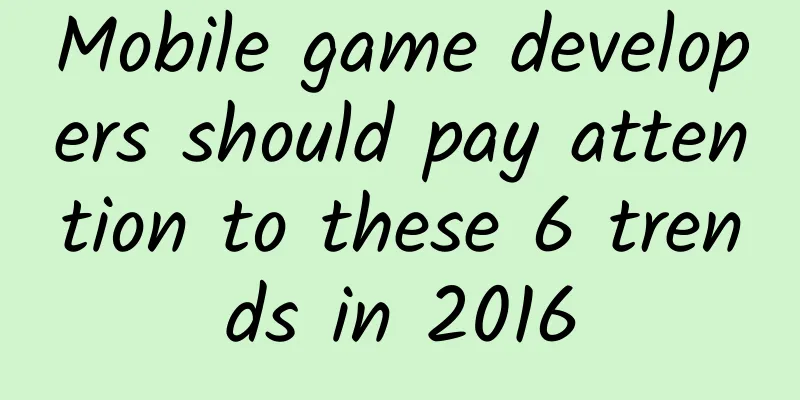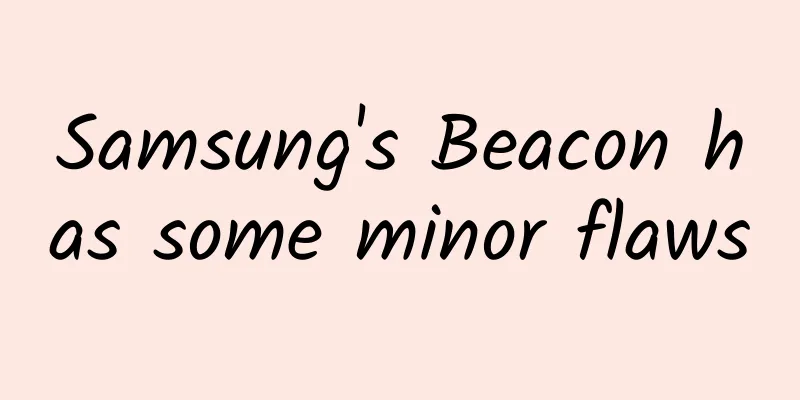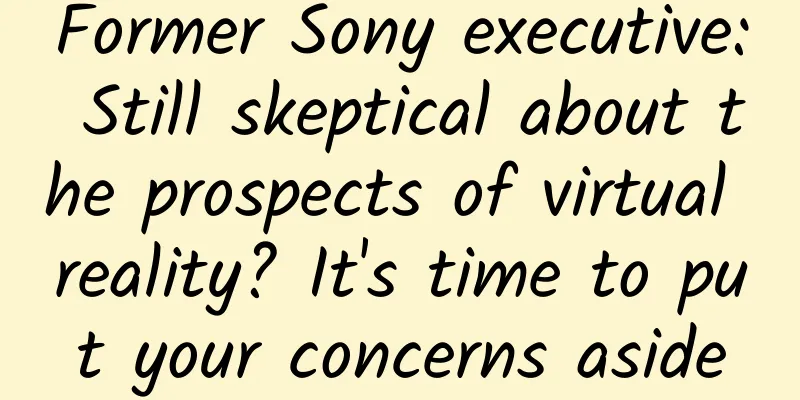Common user incentive methods for event operations!

|
In the definition of a service platform, as the party providing services, there will be corresponding income every time a service is provided. How can we use incentive programs to encourage users to provide services more actively? 01 User Psychology AnalysisIn the definition of a service platform, as the party providing services, there will be corresponding income every time a service is provided. This is a very basic logic and is also one of the original motivations for service providers to come to this platform. Based on this motivation, from a superficial analysis based on common sense, as the party providing the service, it is reasonable to obtain more income by providing more services. So, since more income can be obtained, why does the platform need to use various means to motivate? Why would service providers (hereinafter referred to as “users”) have resistance to actively providing services? Going back to the user's most basic psychology, doing anything too much will make them tired and bored, and they will lack motivation. When the marginal motivation generated by the benefits that providing services can bring to them decreases to a clearly too small level, they will be unwilling to provide services. Therefore, we need to explore what is the cause of motivation, or marginal motivation? In addition to what has been mentioned above, it may be visible cash income, there may also be spiritual gains, a sense of accomplishment after completing a service, recognition and praise after providing a service, etc., which is what we often call "material and spiritual double harvest." Based on this basic analysis, we have a preliminary method to encourage and motivate users after they complete the service so that they can continue to provide services, that is, to give them more cash income and more spiritual gains. So, with limited investment, how can we motivate users more effectively? There are two common ways of motivation, namely:
Ultimately, it is still necessary to take advantage of the user's psychology of "greed, anger, ignorance and delusion", making the user want to gain more, lose less, and lack rationality, so as to provide higher frequency services. The examples used in the following text are basically from relevant content of the following platforms: Huolala driver side, Didi driver side, Xianyu, Lagou corporate users, Toutiao writers, etc. The relevant screenshots are from the Internet and are for reference only. 02 Functional DesignExploiting the addictive mechanism of rewards. By doing more, they can gain more material or spiritual benefits, which will motivate them to continue providing services. 1. Achievement MotivationLalamove driver side: Prompts users to have achieved the goal of "earning XX yuan and completing XX orders" on the platform. As you continue to provide services, you can earn more income. Xianyu: The copywriting of selling things uses the word "earn" to imply to users that this is an activity to make money, and that more money can be earned by providing more goods. Moreover, this behavior is further reinforced by the subsequent "showing off". WeChat Pay/Alipay: A function implemented by both is that income can be obtained through voice prompts such as "WeChat Pay/Alipay has received X yuan". This may seem like just an ordinary reminder tone, but it can encourage users to sell more goods by reinforcing their psychological cues to earn income. 2. Growth systemTaobao sellers: By differentiating sellers by levels, using words such as diamonds and crowns, users are encouraged to provide more and better services. At the same time, by comparing with other sellers and building a competitive mentality, users are encouraged to provide more and better services. 3. Design the interaction between the two partiesDidi driver terminal: The system is designed to allow passengers to give lottery money/tips to drivers, so that they can earn extra income, thus motivating drivers to provide more and better services. SF Express: When the courier picks up the package, you can buy lottery tickets through him. On the one hand, it is convenient for buyers. On the other hand, by giving the courier corresponding commissions, he can earn income and encourage him to promote the service more. Exploiting loss aversion. By making users feel the possible losses of not providing services, they are encouraged to provide more services. 4. The psychology of grabbing ordersDidi driver terminal: The button design, the sense of urgency of the countdown, and the tension created by the voice announcement "xx order has been snatched away" all create a psychological experience of "possible loss" for users. Lalamove driver side: The guidance of the copy creates a sense of urgency, "hurry up and grab it", a feeling that if you don't grab it now, it will be gone, which motivates users to provide services. In addition to the above two incentive methods, some other functional designs can also be used to provide users with more services, which are also briefly introduced here. 5. Self-motivationLalamove driver side: By allowing users to set small goals for themselves, we can achieve self-motivation for users. 6. Added valueDidi driver terminal: By providing other privileges and benefits (special refueling offers), users are encouraged to use the APP, which in turn leads to possible service provision. 7. Limit by rulesToday's headlines writers: You can withdraw cash only when your income reaches X yuan. In this way, users are forced to provide a certain amount of services in order to obtain their own rights and interests. Today's headlines writers: Cash withdrawals are only available between the 1st and 5th of each month. When this window is missed, you can only wait until next month. During this period, users are suggested to provide more services and earn more money. 03 Event OperationExploiting the addictive mechanism of rewards. 1. Through activities and tasksDidi driver terminal: Complete tasks of different levels every day and receive bonuses of different levels. By providing additional rewards during peak hours in the morning and evening, users are encouraged to provide more services during this time period. Exploiting loss aversion. 2. Use rules to constrain less-serviced servicesDidi driver terminal: In the dispatch mode, rejection will affect the quantity and quality of subsequent dispatches. The evaluation (average) score affects the number and quality of dispatches. In order to improve the average score, multiple services are used to increase the impact of negative reviews. 3. Use campaign copyUber Driver App: Incentive content through relevant operational copywriting 4. Pay firstLalamove driver side: Using the prepaid membership system, users want to earn back the membership fees in order to avoid wasting them, thereby encouraging themselves to provide more services. Lagou enterprise users: Become a VIP member and get your VIP fee back after communicating with candidates every day for 30 consecutive days, increasing the frequency of service. In addition, some other operational activities can also be carried out to encourage users to provide more services. 5. Daily check-in6. Theme activitiesToday's headlines writers: By hosting themed content contests and offering incentives such as bonuses, we encourage users to provide services. The corresponding incentive effect can also be achieved by conducting reward activities with third parties. 04 ConclusionPromoting a product to increase daily active users is only one of its goals. For products that need to encourage one group of users to provide services to another group of users, it is not enough to increase daily active users, but also requires more content from the supplier. This article only preliminarily sorts out some common practices from a single user incentive dimension. Whether it is the reward addiction mechanism or the loss aversion mechanism, it is practicing the level of user motivation. In addition to these two levels, I believe there will be more interesting ways to play and practices waiting for us to explore and discuss. This aspect will be discussed later. Author: What the hell Source: What the hell |
<<: Temporary workers cannot take the blame for Pinduoduo's public relations
>>: Why does your Xiaohongshu have no traffic?
Recommend
“White noise” helps you sleep, is it science or hoax?
Open the video website, enter "noise", ...
Li Dongmin of Juefei Technology: Autonomous driving technology has entered the ecological era, and China's path is leading the world
In the past 2020, new energy vehicles that have s...
Many people want to play the game of "Pouring water to make ice"! But... Important reminder
"Pouring water to make ice" is a popula...
All-round upgrade! Beidou has a new update after a thousand days!
At 10:49 on May 17, my country successfully launc...
Run a lucky draw in 6 steps and double your Weibo followers!
Lucky draw activities are an important tool for i...
Analysis of Samsung Note Edge's curved screen: It's just for show but not practical
If I were to describe the Samsung Note Edge in tw...
Don’t think that the second brother is cute and adorable, he actually has extremely strong fighting power!
"The pestle's mouth was three feet long,...
Breaking the world record! China's "artificial sun" has achieved a major breakthrough!
The "artificial sun", also known as the...
How to make money by starting a short video business? How to make money through short video live streaming?
Many people want to start a business with short v...
Do you know how hard your belly works to avoid bursting?
We all know that our skin (epidermis) is stretcha...
Japanese animation "Crayon Shin-chan" all 1977 episodes in Mandarin and Chinese subtitles
Xiaoxin is 5 years old this year. Don’t think that...
Facebook video ad copywriting guide, please check it out!
Facebook is the world's number one community....
Sweet Trap——“Healing Sweets” or “Sweet to Sadness”?
● It’s not good to eat sweets. ● Eating sweets ca...
To B Operation Growth Methodology
In recent years, for PMs who have been engaged in...









